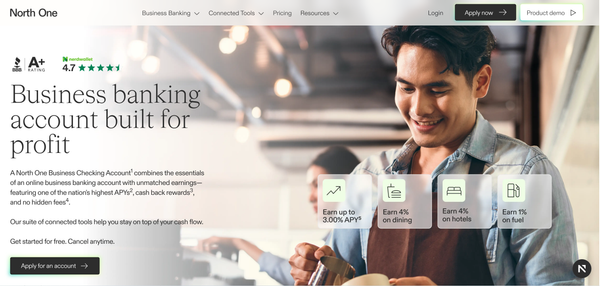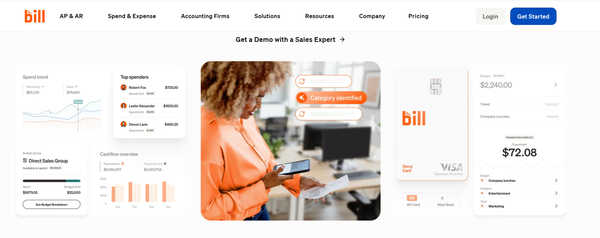Native Advertising: Blending In to Stand Out
Native advertising represents a powerful strategy for brands looking to stand out in a crowded digital landscape. Discover how native advertising blends seamlessly with editorial content to stand out, offering authenticity, value, and higher engagement rates compared to traditional ads.

In the ever-evolving landscape of digital marketing, native advertising has emerged as a powerful tool that blends seamlessly with editorial content, offering a non-intrusive way to engage audiences. Unlike traditional advertising, which often disrupts the user experience, native ads are designed to integrate smoothly into the platform's content, providing value and enhancing brand engagement.
According to Sharethrough and IPG Media Lab, "Native ads register a 53% higher viewership than display ads in 2022". This article delves into the concept of native advertising, its benefits over traditional ads, common misconceptions, challenges, and best practices for creating transparent, authentic, and engaging content.
What is Native Advertising?
Native advertising refers to a form of paid media that matches the look, feel, and function of the media format in which it appears. These ads integrate naturally into the editorial flow of a website or platform, providing a seamless user experience that feels less intrusive than traditional advertising formats. Consumers interact with native ads 20% to 60% more than standard banner ads (Business Insider). Examples of native advertising include in-feed ads on social media, recommended content widgets, and promoted search results.
Benefits of Native Advertising Over Traditional Ads
- Enhanced User Experience: Native advertising offers a seamless user experience by blending in with the platform's editorial content. This non-disruptive approach leads to higher engagement rates and a more positive perception of the brand.
- Improved Brand Engagement: By aligning ads with contextually relevant content, native advertising fosters deeper brand engagement. Consumers are more likely to interact with ads that resonate with their interests and preferences, leading to higher conversion rates.
- Higher Credibility and Trust: Native ads, when done right, provide authenticity and value, enhancing the credibility of the brand. Users perceive these ads as less intrusive and more trustworthy compared to traditional banner ads.
- Better Performance Metrics: Studies have shown that native ads achieve better performance metrics, such as click-through rates (CTR) and conversion rates. According to a Sharethrough and IPG Media Lab study, native ads registered an 18% higher lift in purchase intent and a 9% lift for brand affinity responses compared to traditional ads.
- Reduced Ad Fatigue: Since native ads blend in with the editorial content, they are less likely to contribute to ad fatigue. Users are more likely to interact with content that feels relevant and non-intrusive.
Common Misconceptions About Native Advertising
- Native Ads Are Deceptive: A common misconception is that native ads are designed to deceive users. However, transparency is key to successful native advertising. Clear labelling and disclosure ensure that users understand they are viewing sponsored content.
- Native Advertising is Limited to Social Media: While social media platforms are popular venues for native advertising, this format extends to various digital channels, including search engines, news websites, and mobile apps.
- High Costs With Minimal Returns: Some believe native advertising is prohibitively expensive with uncertain returns. In reality, when executed correctly, native ads can deliver significant ROI due to their higher engagement and conversion rates.
Challenges in Native Advertising
- Maintaining Authenticity: Creating authentic content that resonates with the audience while still achieving marketing goals can be challenging. It requires a delicate balance between promotional and valuable editorial content.
- Ensuring Transparency: Ensuring that native ads are labelled and transparent is crucial to maintaining trust. Misleading ads can lead to a negative brand perception and legal repercussions.
- Measuring Effectiveness: Accurately measuring the effectiveness of native ads can be complex. Marketers need to track various metrics, such as engagement rates, time spent on content, and conversion rates, to gauge the success of their campaigns.
Best Practices for Creating Transparent, Authentic, and Engaging Content
- Prioritize Value and Relevance: Ensure that your native ads provide real value to the audience. Content should be relevant, informative, and aligned with the user's interests and needs.
- Clear Disclosure: Always disclose that the content is sponsored. Use clear labels such as "Sponsored," "Paid Content," or "Promoted" to maintain transparency and trust with your audience.
- Align with Editorial Standards: Native ads should match the tone, style, and format of the platform's editorial content. This alignment helps maintain a seamless user experience and enhances engagement.
- Use High-Quality Content: Invest in high-quality content that is visually appealing and well-written. High standards of content production reflect positively on your brand and improve user engagement.
- Test and Optimize: Continuously test and optimize your native ad campaigns. Use A/B testing to determine what works best and make data-driven decisions to improve performance.
- Engage with Interactive Features: Use features like polls, questions, and swipe-up links to increase engagement and drive traffic to your website.
- Utilize Ad Extensions: Take advantage of ad extensions to provide additional information and increase the visibility of your ads.
- Optimize Landing Pages: Ensure that your landing pages are optimized for conversions and provide a seamless user experience.
Effective Implementation of Native Advertising
- Choosing the Right Platforms: Select platforms that align with your target audience and marketing goals. Popular platforms for native advertising include social media networks, search engines, and content discovery networks.
- Leveraging Influencer Partnerships: Collaborate with influencers to create authentic and engaging native ads. Influencers can help amplify your message and reach a wider audience with greater credibility.
- Utilizing Programmatic Tools: Programmatic advertising tools can help automate and optimize your native ad campaigns. These tools use data and algorithms to deliver the right ads to the right audience at the right time.
- Creating Engaging In-Feed Ads: In-feed ads should blend seamlessly with the user's feed, whether on social media or news websites. Ensure the content is visually appealing and contextually relevant to encourage engagement.
- Utilizing Bloomclicks' Expertise: Platforms like Bloomclicks provide effective solutions for creating and managing native ad campaigns. With their expertise, you can address key pain points, such as targeting, optimization, and performance measurement, to ensure your campaigns achieve maximum impact.
How to Create Effective Native Ad Campaigns
- Understanding Your Audience: Start by thoroughly understanding your target audience. Conduct market research to identify their interests, preferences, and pain points. Native advertising is projected to make up 74% of total US display ad revenue by 2021 (eMarketer), this information will guide your content creation and targeting strategies.
- Crafting Compelling Content: Create compelling content that provides value and resonates with your audience. Focus on storytelling, providing useful information, and addressing the audience's needs and interests.
- Optimizing for Mobile: Ensure your native ads are optimized for mobile devices. With the majority of users accessing content via mobile, it's crucial to deliver a seamless and engaging mobile experience.
- Using Contextual Targeting: Leverage contextual targeting to ensure your ads appear alongside relevant content. This increases the likelihood of user engagement and enhances the overall effectiveness of your campaigns.
Bloomclicks: Your Partner in Native Advertising
Bloomclicks.com is a leading platform specializing in native advertising solutions. With a focus on delivering high-quality, engaging content, Bloomclicks.com has helped global clients overcome key pain points in their advertising strategies. Here are some ways Bloomclicks.com can assist your brand:
- Expertise in Native Advertising: Bloomclicks.com offers expert guidance on creating effective native ad campaigns that resonate with your target audience.
- Advanced Targeting and Programmatic Tools: Utilize Bloomclicks' advanced targeting and programmatic tools to reach the right audience with precision.
- High-Quality Content Creation: Collaborate with Bloomclicks' skilled content creators to produce engaging and valuable native ads.
- Transparent and Authentic Approach: Bloomclicks emphasizes transparency and authenticity in all its campaigns, ensuring your brand maintains trust with its audience.
For more information and to start creating effective native ad campaigns, visit Bloomclicks.com.
Conclusion
Native advertising offers a unique opportunity to engage audiences non-intrusively and authentically. By blending seamlessly with editorial content, native ads provide value and enhance brand engagement, leading to higher conversion rates and improved ROI. However, success in native advertising requires a careful balance of transparency, quality content, and continuous optimization.
Platforms like Bloomclicks can help you navigate the complexities of native advertising, providing the tools and expertise needed to create effective campaigns that resonate with your target audience. By following best practices and leveraging the right platforms and tools, you can harness the power of native advertising to achieve your marketing goals.
Now, we'd love to hear from you! What are your thoughts on native advertising? Have you seen any campaigns that stood out to you? How do you feel about brands integrating ads so naturally into the content you consume? Share your experiences and opinions in the comments below!
If you found this article insightful, don't keep it to yourself—share it with your friends and followers to spread the word. And don't forget to connect with Bloomclicks on social media for more valuable insights and industry updates. Lastly, make sure to subscribe to our newsletter to stay ahead of the curve with the latest trends and exclusive offers that you won't want to miss.
FAQs
What is native advertising?
Native advertising is a form of paid media that matches the look, feel, and function of the media format in which it appears, providing a seamless and non-intrusive user experience.
How does native advertising differ from traditional advertising?
Unlike traditional ads that are often disruptive, native ads blend seamlessly with the editorial content, enhancing user experience and engagement.
Why is transparency important in native advertising?
Transparency is crucial to maintain trust with the audience. Clear labelling ensures users understand they are viewing sponsored content.
How can Bloomclicks help with native advertising?
Bloomclicks provides effective solutions for creating, managing, and optimizing native ad campaigns, addressing key pain points such as targeting, optimization, and performance measurement.
What are some best practices for native advertising?
Best practices include prioritizing value and relevance, clear disclosure, aligning with editorial standards, using high-quality content, and continuous testing and optimization.
What metrics should be tracked to measure the effectiveness of native ads?
Key metrics include engagement rates, time spent on content, click-through rates, and conversion rates.





